Patterns
Ask users for…
Marital Information
Use with caution: Available- Contributors
- Lynn Stahl (Agile Six)
- Fran Cross (Agile Six)
- Adam Whitlock (Ad Hoc)
- Belle Poopongpanit (Agile Six)
- Christine Rose Steiffer (Agile Six)
- Kristen Faiferlick (Ad Hoc)
- Jeana Clark (Ad Hoc)
- Beth Pandone (Pluribus)
- Jaci Wilkinson (Ad Hoc)
Usage
When to use this pattern
- When you need to collect a person’s marital status or information about their current and previous marriages. This applies when you need information from a Veteran, spouse, or dependent.
Design principles
-
Take a trauma-informed approach. Although commonly asked, questions about marital status and previous marriages can bring up complex feelings and memories in respondents. Explain why we ask the question with an Additional Info component.
-
Only ask for what you really need. While this pattern includes multiple follow-up questions, only collect the specific data that your form requires.
How to design and build
How this pattern works
“What is your current marital status?” question
- Start with this question and include additional questions only when necessary. This question is the foundational part of this pattern. If your form needs additional information, you can include questions from the question bank in this guidance. The format of this question is as follows:
- Question: What is your current marital status?
- Answers:
- Married
- Divorced or annulled
- Separated
- Widowed
- Never married
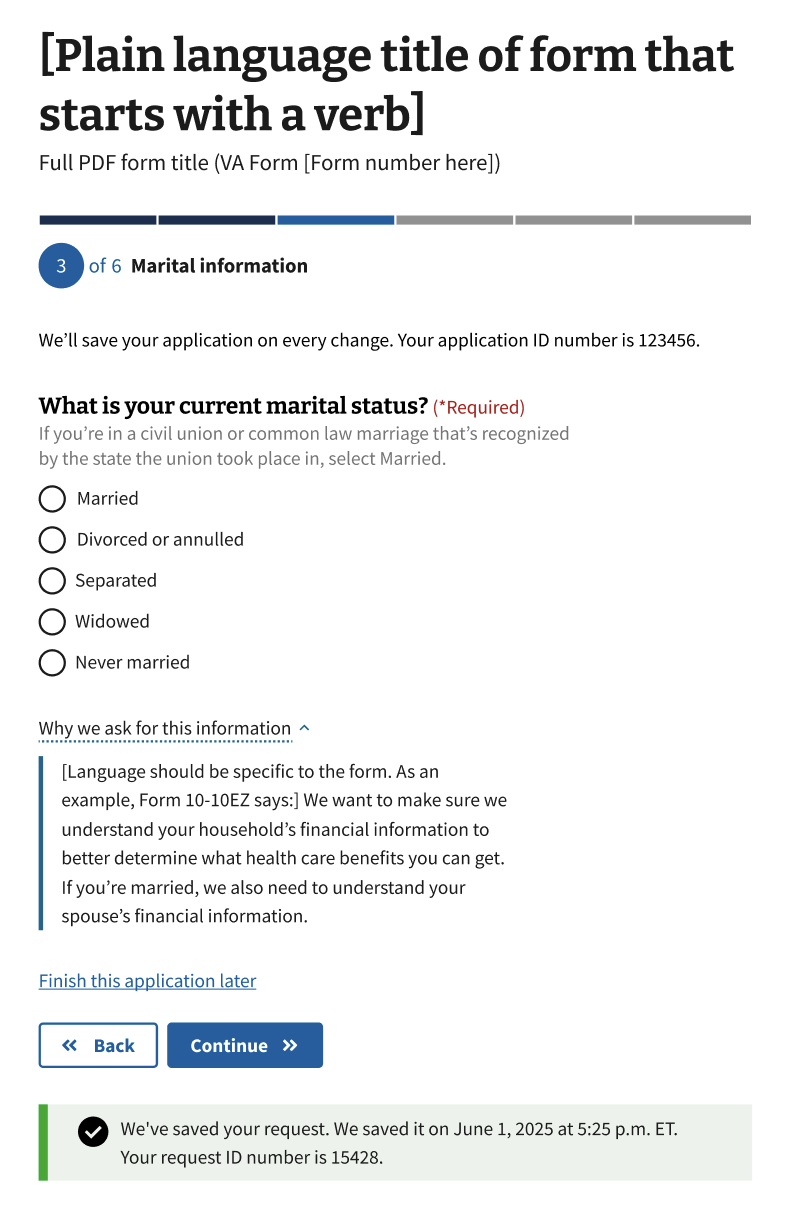
- If your form doesn’t need this level of detail, simply ask “Are you currently married?”. Include “Yes/No” radio button options for a response. Map those to the “Married/Never Married” workflows.
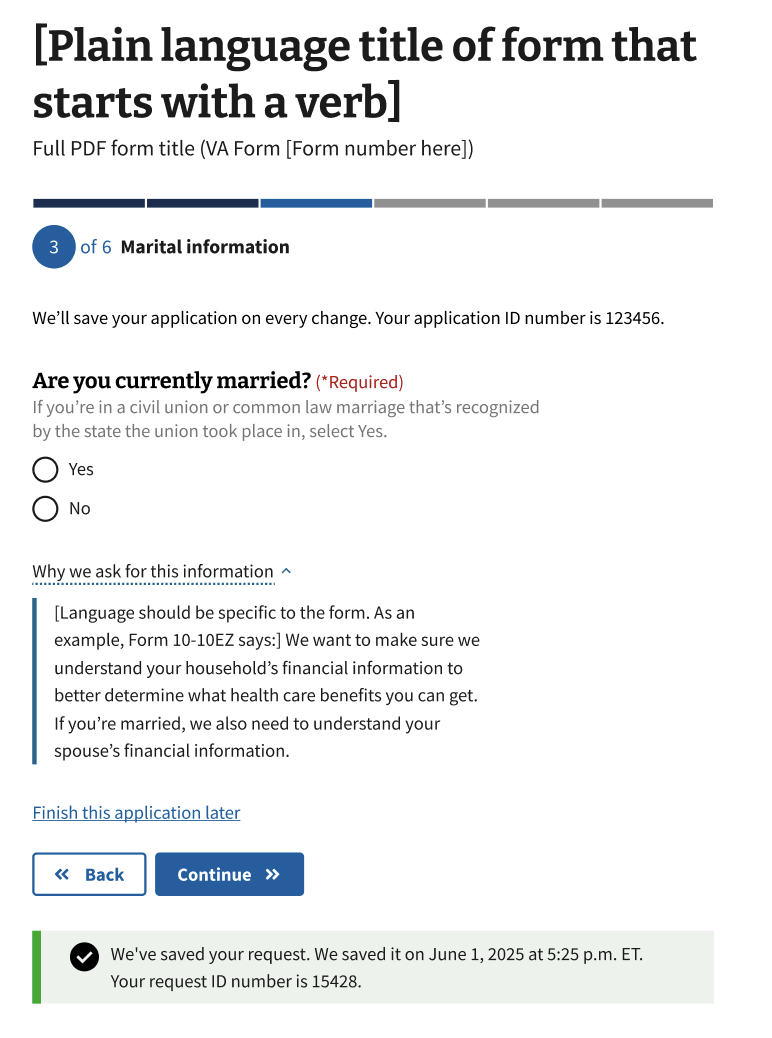
- Include an explanation for why we ask this question. Place this explanation in an Additional Info component for questions that may feel particularly invasive or difficult for users to answer.
Only use the following questions in this pattern if your form needs more information.
Spouse personal information and identification
This optional section includes questions about the spouse, including:
- Name
- Date of birth
- Social Security number
- If they are a Veteran
- Their VA file number and military service number if they are a Veteran
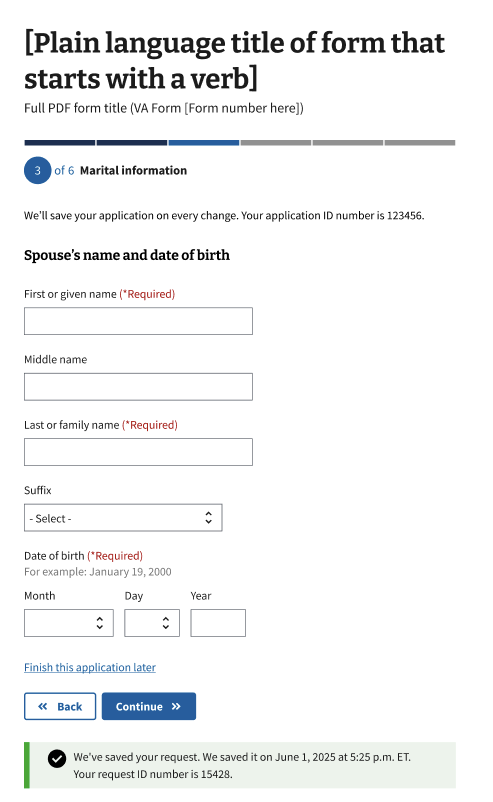
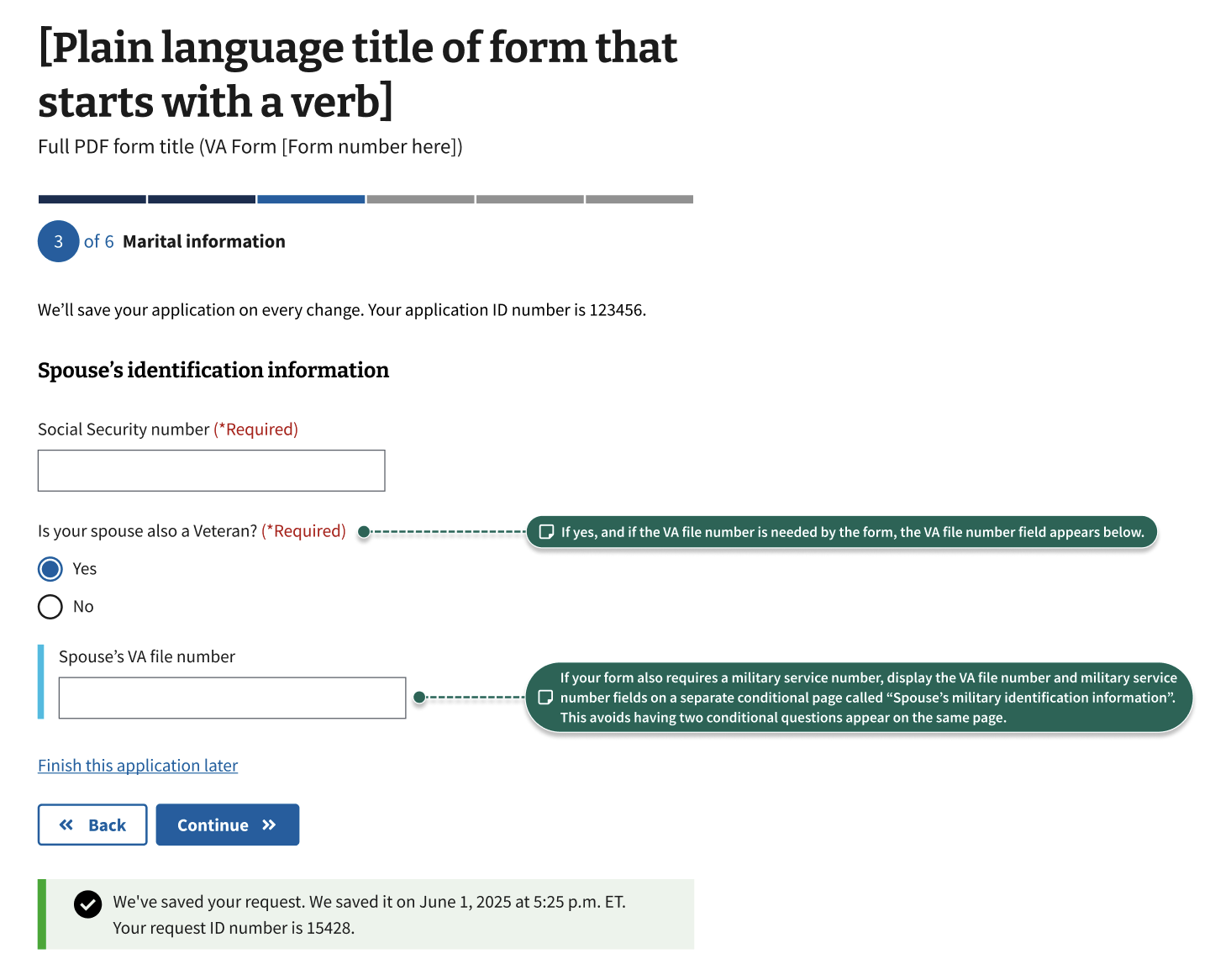
Living arrangement information
This optional section asks if the user currently lives with their spouse or has within the past 12 months. If they don’t live together, it offers a follow up question asking why they live separately.
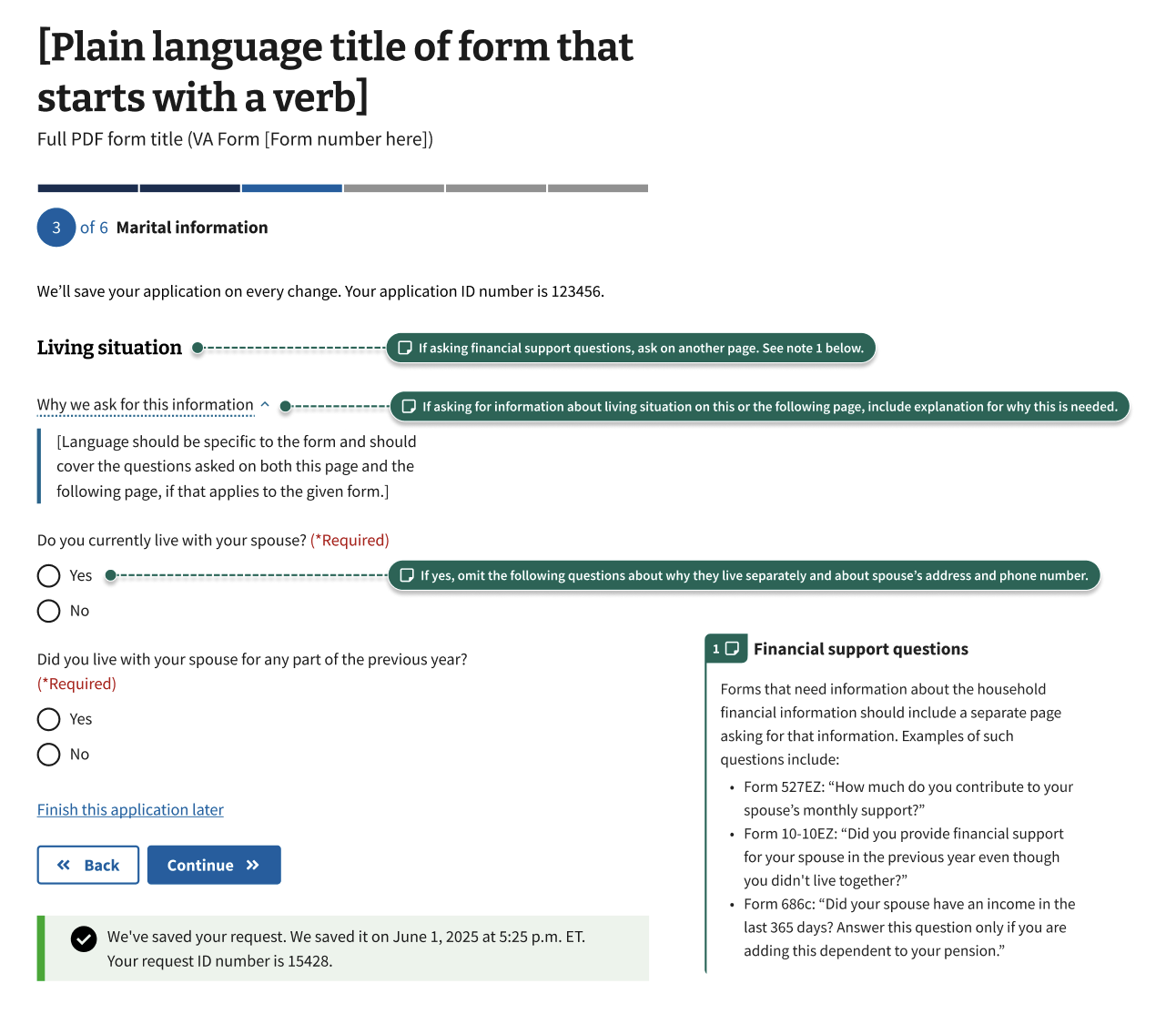
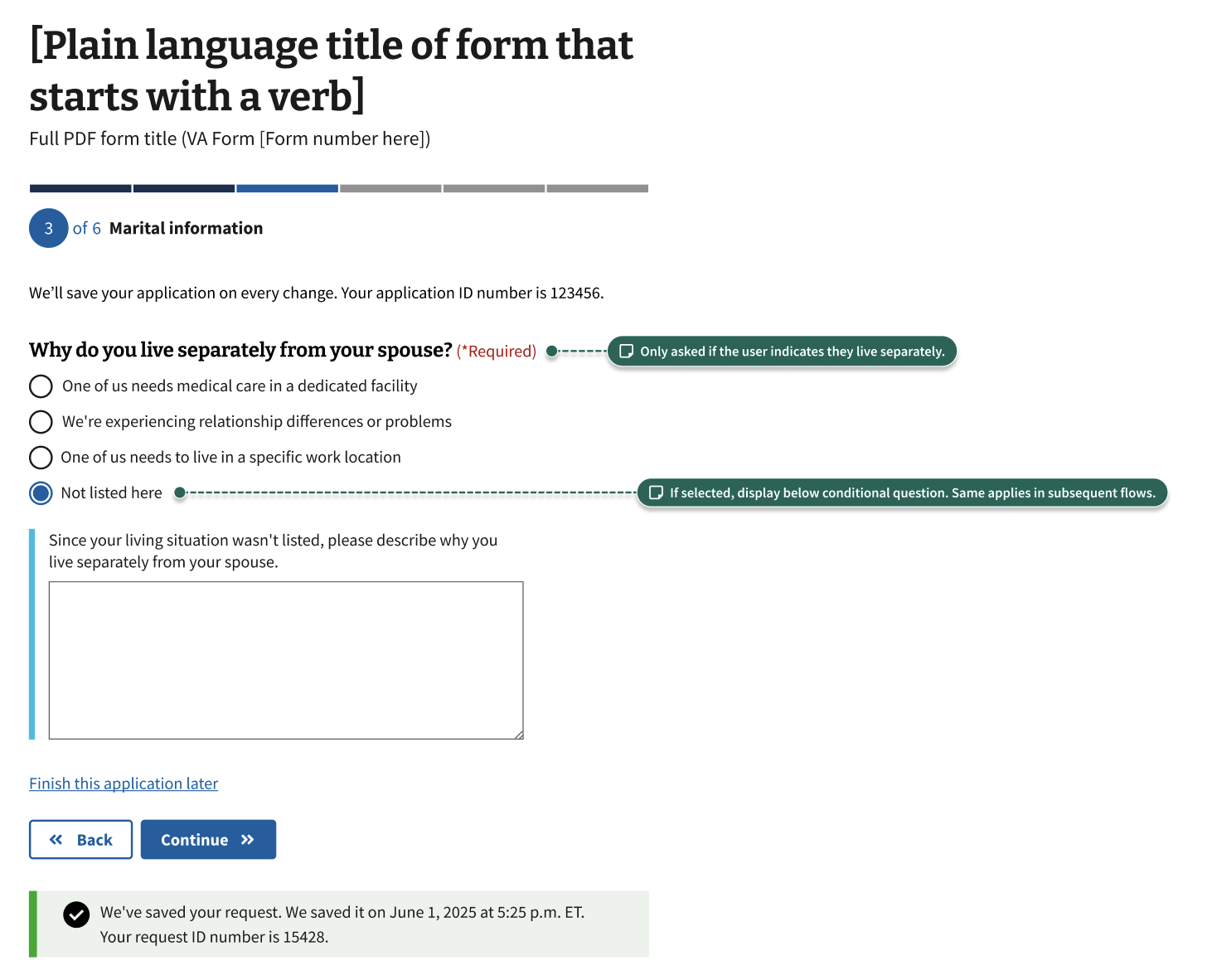
Marriage information
This optional section includes questions about the marriage, such as:
Date and place of marriage
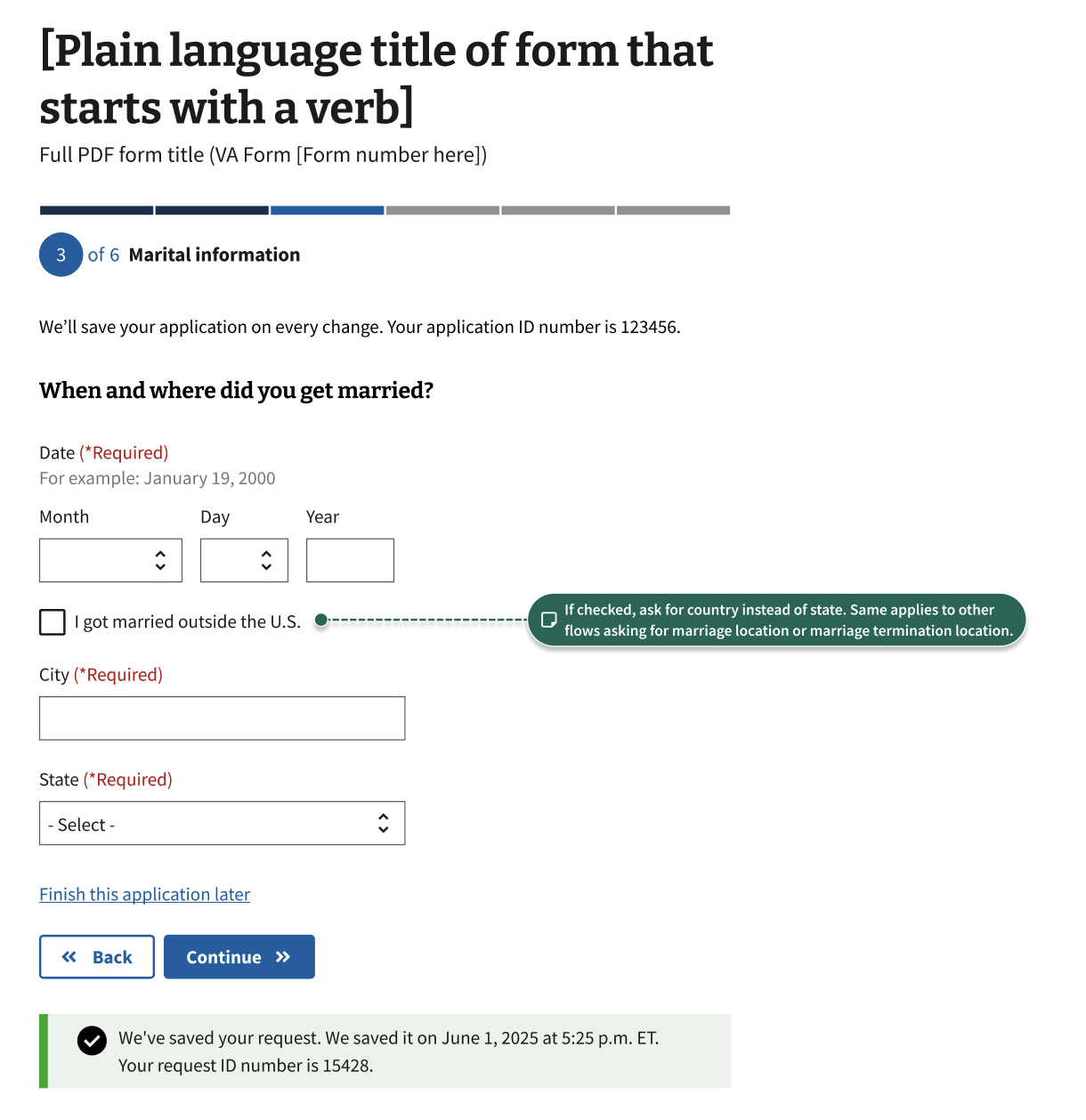
Type of marriage
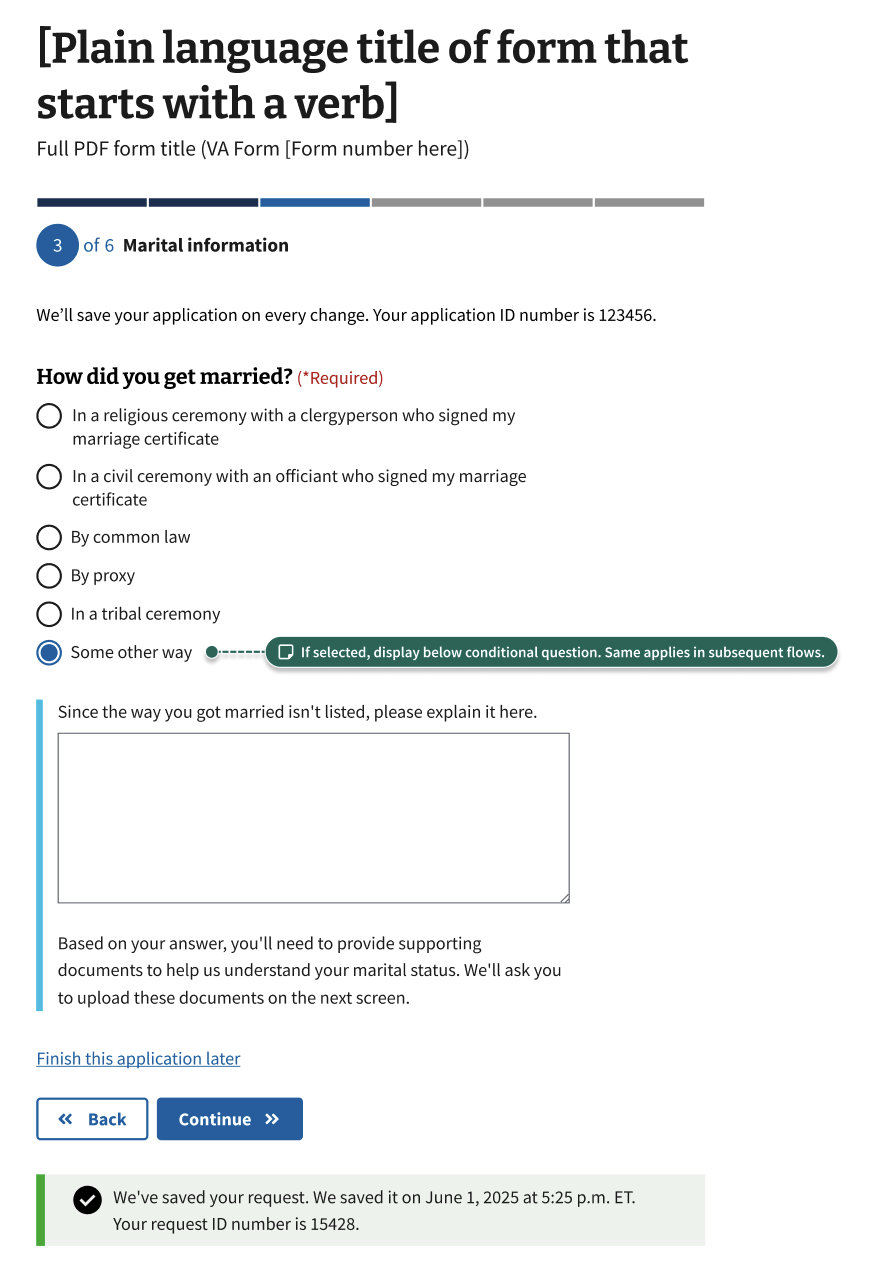
Reason for termination, if applicable
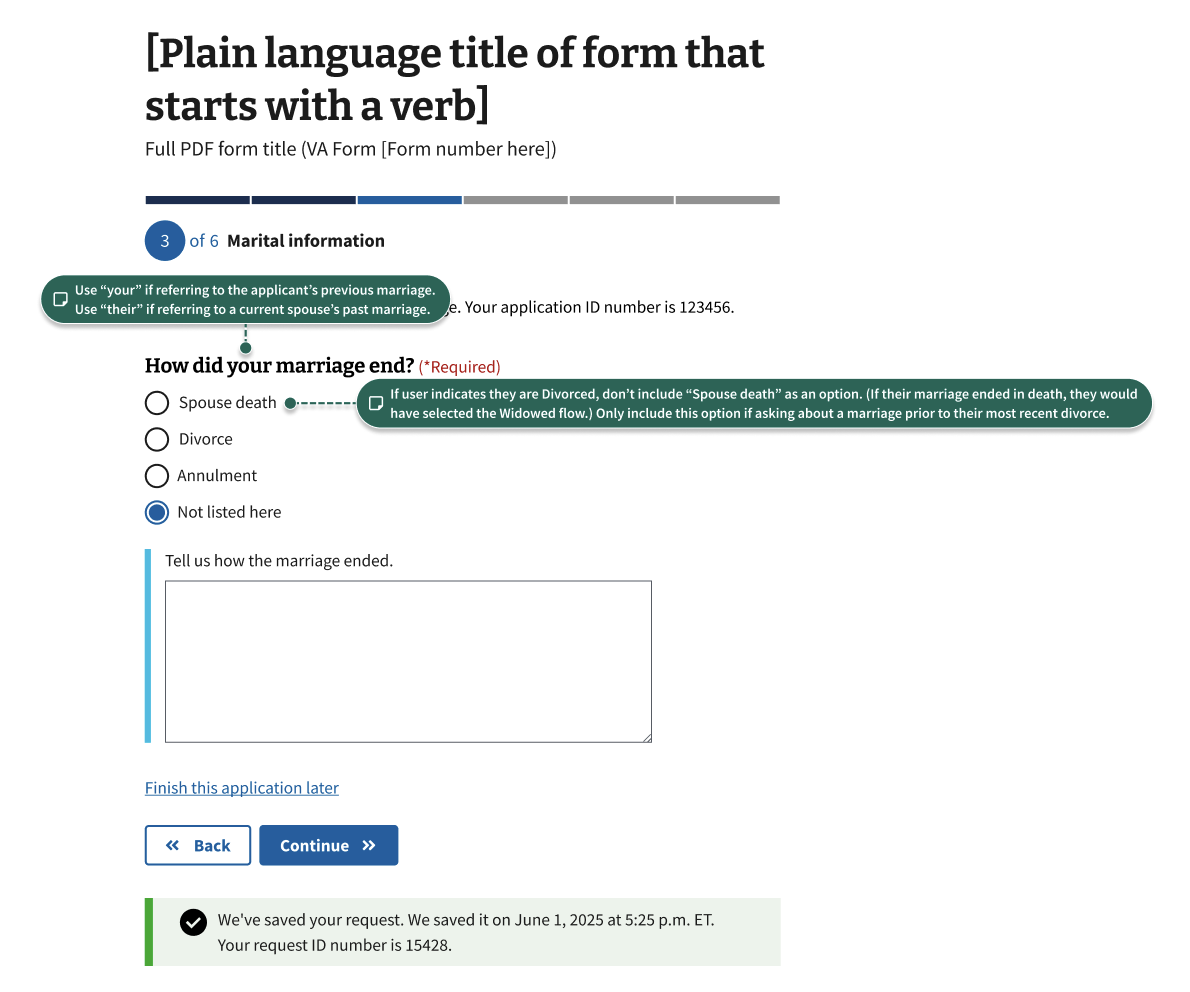
Date and place of termination or spouse’s death, if applicable

Previous marriage information
This optional section features the Multiple Responses (also known as: List & Loop) pattern to ask questions about previous marriages, including:
- Name(s) of former spouse(s)
- Veteran status of former spouse(s)
- Date and place of marriage(s)
- Date and place of marriage termination(s)
- Method of marriage termination(s)
Patterns and components used in this pattern
Additional considerations
- If a form requires file uploads (for example, a marriage certificate or divorce decree), state that these files are needed on the form introduction page.
- As the user moves through the form, if they provide a response that triggers conditionally-required file uploads, explain why the file upload is needed. For example, if a user indicates that they were married in a way that is not among the standard responses, include text like this: “Based on your answer, you’ll need to provide supporting documents to help us understand your marital status. We’ll ask you to upload these documents on the next screen [or on the final screen of the form, depending on your form’s situation].”
- If you are asking only one question on a page, the question label should be an h3, as shown in the Ask Users For… A Single Response pattern. However, if you are asking multiple questions per page, give the page a descriptive page title as an h3 and use standard (non-header) labels for questions.
Code usage
A Marital Information pattern library is available for reference, complete with a mock form and example pages. You can explore the pattern implementation and examples in the mock form repository.
Key Features
- Conditional navigation based on marital status
The form dynamically adapts its flow depending on the respondent’s selected marital status. This is achieved by defining route logic within the form configuration file, which determines which pages are shown and in what order.
- Dynamic page titles
The pattern uses dynamic page titles, specifically:
- In the “Veteran Marriage History” section, titles dynamically reference the respondent’s spouse (e.g., “Spouse’s name”).
- In the “Spouse Marriage History” section, titles adjust to reference the current spouse’s former spouses (e.g., “Former spouse’s name”).
This logic helps clarify whose information is being collected and is especially important in handling complex marriage history flows.
- Dynamic titles are implemented using the
titleUIhelper with access toformDatawithin the form page’suiSchema. Please see an example. - A dedicated helper file, is used to generate context-aware dynamic titles throughout the form.
Content considerations
Respondent role
Veterans, their spouse, or a dependent can complete forms. Depending on who is completing the form, some slight alterations to the text content may need to shift. Update content as needed. For example, shift “What is your current marital status” to “What is the Veteran’s current marital status”?
Research findings
A secondary research report from April 2025 explores which VA forms ask questions related to an applicant’s marital status and how they phrase these questions. It also provides recommendations that influenced the creation of this pattern. Learn more in the research report.
This pattern would benefit from additional research. Some areas that were identified as potentially high-impact include learning:
- How users respond to trauma-informed language throughout the pattern
- How users respond to the information inside the Additional Info components
- If users have any confusion about whose information is needed in the portion of the pattern asking for information on their current spouse’s previous partner(s)
- The best location for both optional and required file uploads (either in the context of the marital information pattern/step, or at the end of the form flow)
